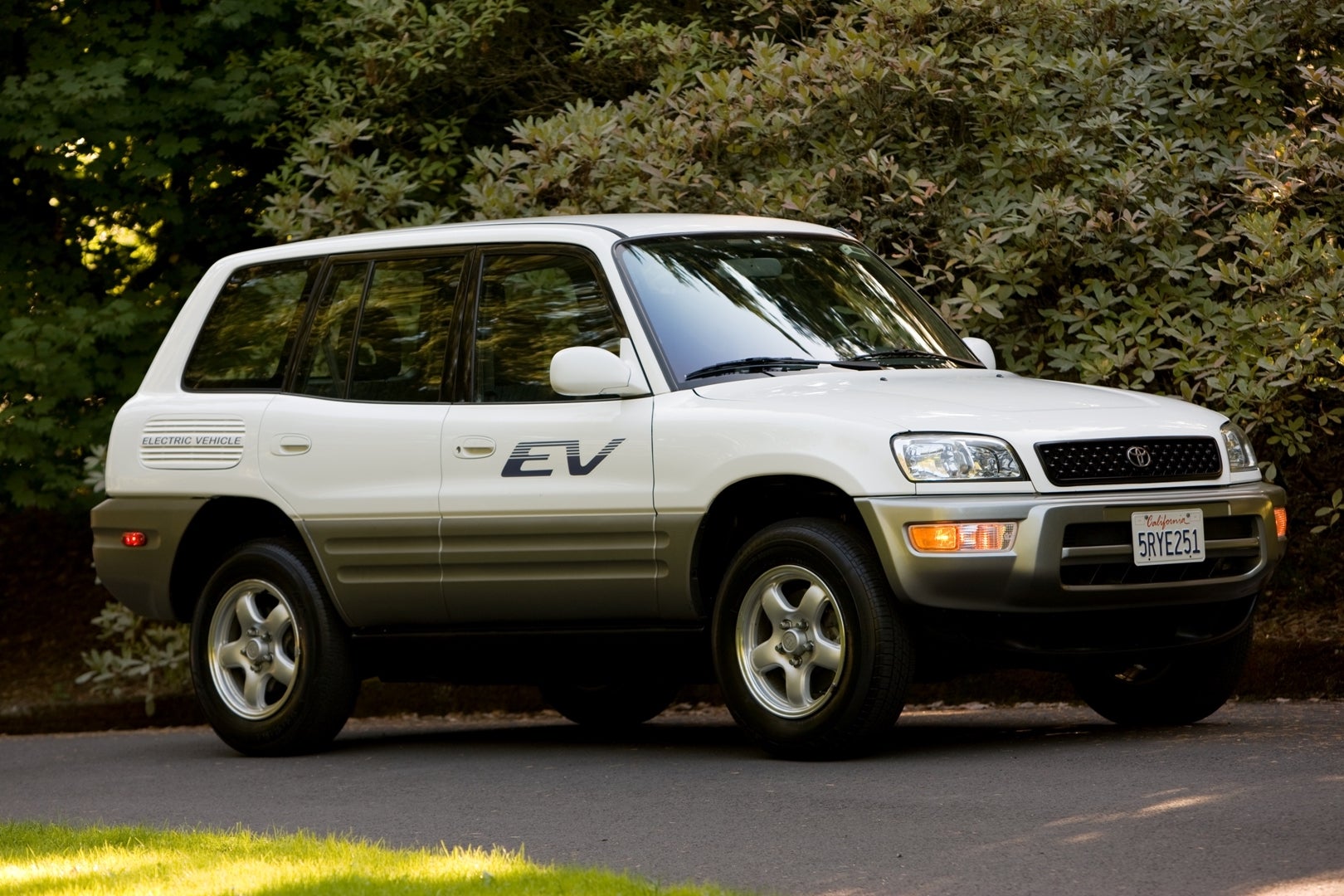Ever since they became reliable enough to replace horses, internal combustion-engined vehicles have been a mainstay of land transport. Nevertheless, electric vehicles have piqued the interests of divergent thinkers for more than a century, and have been produced in small numbers by innumerable forgotten startups and major carmakers alike. One of the biggest car companies to try its hand at an EV before the 2010s' lithium-ion battery revolution was Toyota, which for a time sold the original RAV4 crossover not just with a fully electric drivetrain, but an inductive charger developed by General Motors.
Marketed as the RAV4 EV, this ancestor of the modern electric crossover was introduced to the United States in the late 1990s, whereupon Toyota made it available for lease. Though adapted from the existing RAV4, it stored its batteries in the floor like a modern EV. Unlike today's cars, however, this was a nickel-metal hydride pack, capable of storing just 27 kilowatt-hours. Owing to this capacity—small relative to new-age EVs—its range was limited, with Toyota claiming 134 miles of city driving for later models, and the EPA rating it at just 95 miles.

Between its curb weight of 3,395 pounds—550 pounds heavier than the porkiest gas-powered model—and its Geo Metro-like power output of 67 horse and 140 pound-feet of torque, it was also no Porsche Taycan Turbo S. Zero to 60 miles per hour reportedly took 18 seconds or more, and it topped out at 78 mph, or barely enough to pass on the highway.
By the time Toyota put the RAV4 EV on sale in the United States, which it did in March 2002, the car could be ordered with an inductive charging system based on the Magne-Charge system GM developed for the EV1 and Chevrolet S-10 Electric (let's save that can of worms for another day). It could feed eight kilowatts into the battery to recharge it in six hours or so, about the same speed as the 240-volt plug-in method, so as optional conveniences go, it was a pricey one, retailing at $3,750 in modern money.
The RAV4 EV as a whole, really, was pretty expensive, clocking in at $42,000 according to Autoblog, or $60,750 today before EV incentives. Despite costing the modern equivalent of a Tesla Model Y Performance, the RAV4 EV managed to sell 328 units and lease over 1,000 in the U.S. by November 2002, around which point Toyota encountered battery supply issues and discontinued the model.

Over time, these electric RAV4s have proven as durable as any 1990s Toyota, with a 2012 article from Green Car Reports stating close to 500 examples were still registered in California. This longevity is at least anecdotally corroborated by images of a 184,000-mile RAV4 EV that recently surfaced on Twitter, whose poster reports the vehicle to be for sale. Going by their photos, it seems we need to amend that adage about the only certain things in life being death and taxes to include one more thing: The perpetual existence of 1990s Toyotas.
Got a tip? Send us a note: [email protected]









